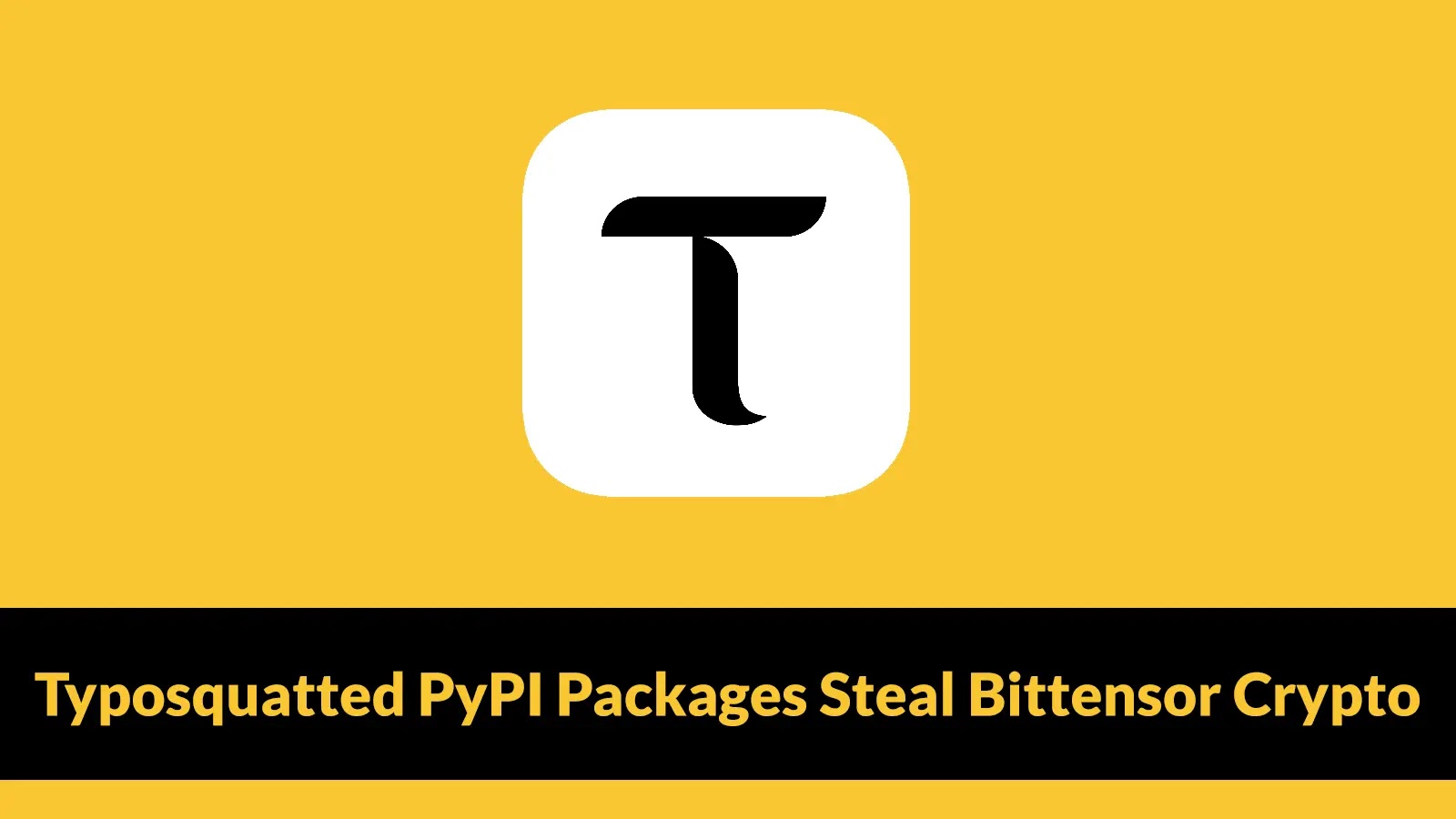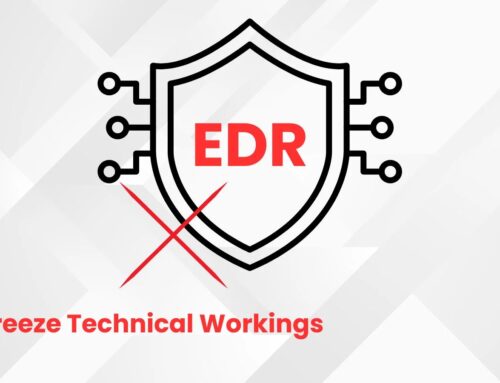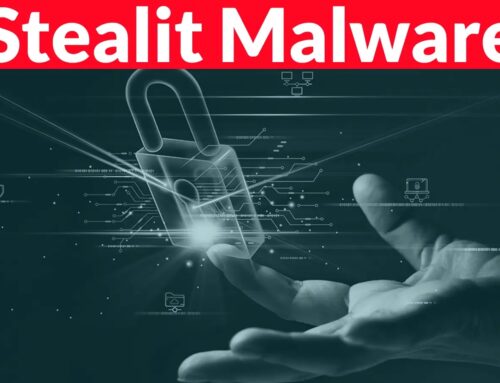
Threat Actors Using Typosquatted PyPI Packages to Steal Cryptocurrency from Bittensor Wallets
The Python Package Index (PyPI) is an indispensable resource for developers, providing a vast repository of open-source libraries. However, its decentralized nature also presents a fertile ground for malicious actors. A recent, sophisticated cryptocurrency theft campaign has emerged, directly targeting the Bittensor ecosystem by leveraging cleverly crafted malicious Python packages. This attack, which employs classic typosquatting techniques, highlights the persistent threat of supply chain vulnerabilities in software development.
The Typosquatting Tactic: Deception at Its Core
The core of this attack lies in typosquatting. Threat actors register package names on PyPI that are deliberately similar to legitimate and widely used Bittensor-related packages. For instance, if a legitimate package is named bittensor-utils, a typosquatted version might be bitensor-utils, bbitensor-utils, or even variations with character substitutions like bittensor_utils to catch common typing errors or hasty package installations.
When developers or users attempt to install what they believe to be a legitimate Bittensor package, a simple typo or oversight can lead them to install the malicious, typosquatted version instead. This deceptive approach preys on human error and the trust placed in package registries like PyPI.
How the Attack Unfolds: Exploiting Staking Operations
Once the malicious package is installed, it lies dormant, waiting for a opportune moment to strike. The campaign specifically targets users engaged in routine staking operations within the Bittensor network. Bittensor, a decentralized machine learning network, requires participants to stake cryptocurrency to contribute to its operations and earn rewards.
During these staking transactions, the compromised package executes its malicious payload. This payload is designed to:
- Intercept or modify wallet operations.
- Extract private keys or seed phrases.
- Initiate unauthorized transactions.
The result is complete wallet drainage, with the victims’ cryptocurrency being siphoned off to the attackers’ addresses. The insidious nature of this attack lies in its ability to blend into normal operational workflows, making detection challenging for unsuspecting users.
The Threat Actor’s Sophistication: Orchestrated Campaign
The sophistication of this campaign suggests a well-resourced and organized threat actor. This wasn’t a random, opportunistic attack but a calculated effort involving:
- Research into the Bittensor ecosystem and its common package dependencies.
- Careful crafting of malicious payloads designed to evade simple detection.
- Strategic deployment of typosquatted packages to maximize chances of accidental installation.
The fact that the attack focuses on draining wallets during staking operations indicates a deep understanding of Bittensor’s operational mechanics and user behavior.
Remediation Actions and Best Practices
Protecting Bittensor wallets and development environments from such sophisticated attacks requires a multi-layered approach. While there isn’t a specific CVE associated with this campaign (as it targets user behavior and supply chain rather than a single software vulnerability), the principles of secure development and dependency management are paramount.
For Developers and Users:
- Verify Package Names: Always double-check the spelling of package names before installation. Pay meticulous attention to hyphens, underscores, and subtle character changes.
- Cross-Reference PyPI with Official Sources: Before installing a package, especially one critical to financial operations or infrastructure, cross-reference its name and maintainer details with the official Bittensor documentation or GitHub repositories.
- Use Virtual Environments: Isolate your development dependencies using virtual environments (e.g.,
venvorconda). This limits the scope of a supply chain compromise to a specific project. - Implement Least Privilege: Ensure that your development environment and particularly tools interacting with cryptocurrency wallets operate with the minimum necessary permissions.
- Monitor Wallet Activity: Regularly review transaction history for your Bittensor wallet and report any suspicious activity immediately.
- Use Checksums and Digital Signatures: Whenever possible, verify package integrity using checksums (SHA256, MD5) provided by official sources. Some package managers and ecosystems support digital signatures, offering a stronger guarantee of authenticity.
For Organizations:
- Supply Chain Security Tools: Implement Software Composition Analysis (SCA) tools to scan and monitor third-party dependencies for known vulnerabilities and anomalies.
- Automated Dependency Audits: Integrate automated tools into your CI/CD pipelines to audit and vet dependencies before they are integrated into production systems.
- Developer Training: Educate developers on the risks of typosquatting, dependency confusion, and other software supply chain attacks.
- Restrict PyPI Access: For highly sensitive environments, consider proxying PyPI access through an internal repository manager that can vet packages.
Relevant Tools for Detection and Mitigation
| Tool Name | Purpose | Link |
|---|---|---|
| PyPI.org | Official Python Package Index – primarily for verification of legitimate packages. | https://pypi.org/ |
| pip-audit | Audits Python environments for known vulnerabilities in installed packages. | https://pypi.org/project/pip-audit/ |
| Bandit | Static application security testing (SAST) tool for Python, helps identify security issues in code. | https://pypi.org/project/bandit/ |
| OWASP Dependency-Check | Analyzes dependencies for known vulnerabilities (supports Python). | https://jeremylong.github.io/DependencyCheck/ |
Conclusion
The attack on Bittensor users via typosquatted PyPI packages serves as a stark reminder of the ever-present dangers in the software supply chain. Threat actors are constantly refining their techniques, capitalizing on human error and the vast interconnectedness of modern software development. By maintaining vigilance, adopting robust security practices, and leveraging available tools, developers and users can significantly reduce their exposure to such sophisticated cryptocurrency theft campaigns and protect their valuable assets in the decentralized world.





